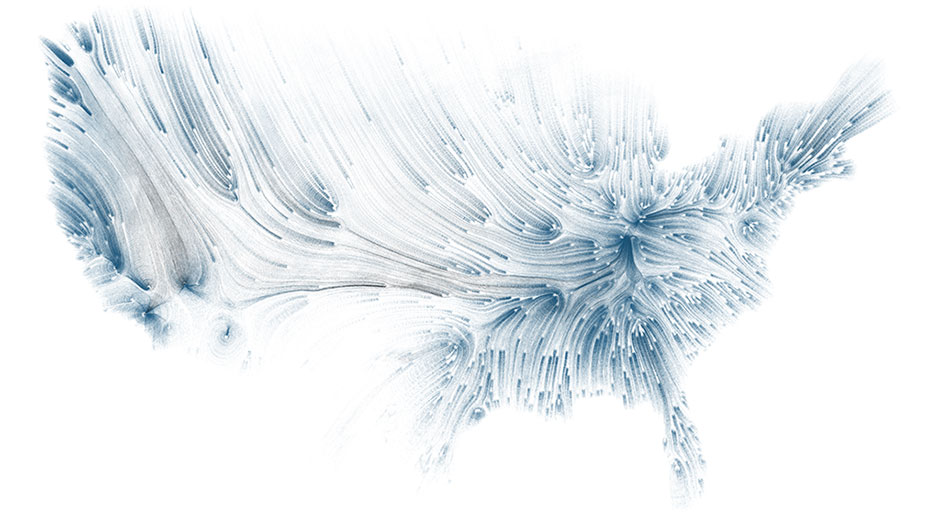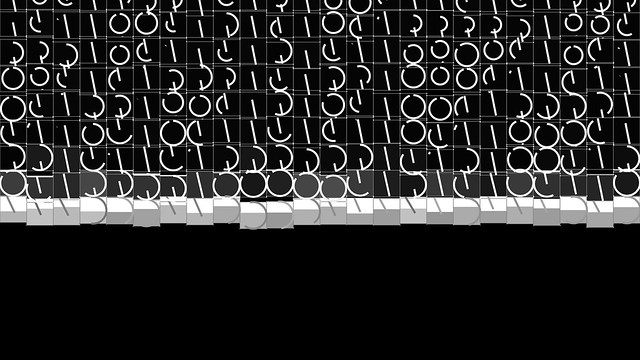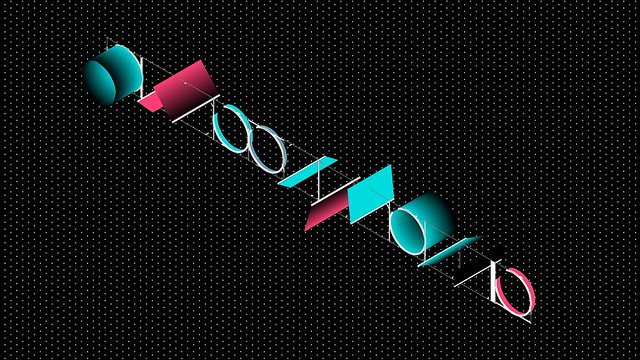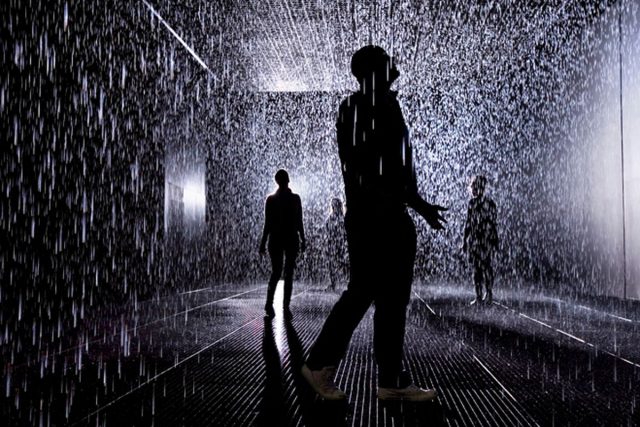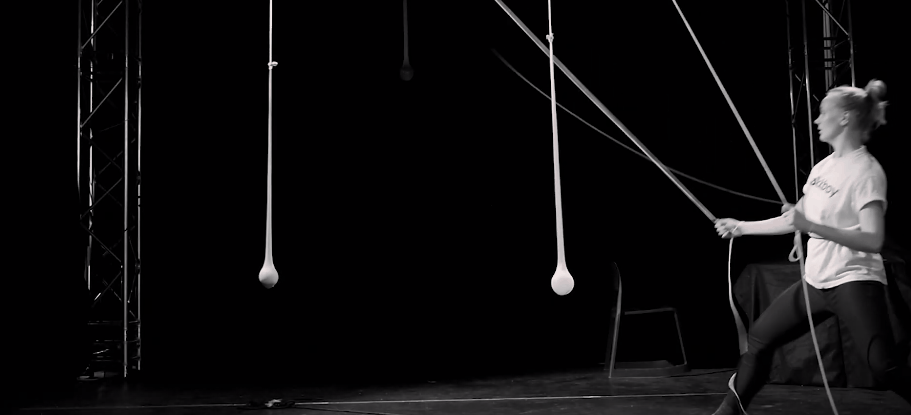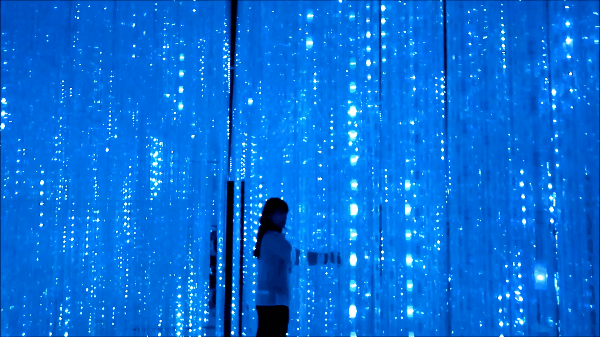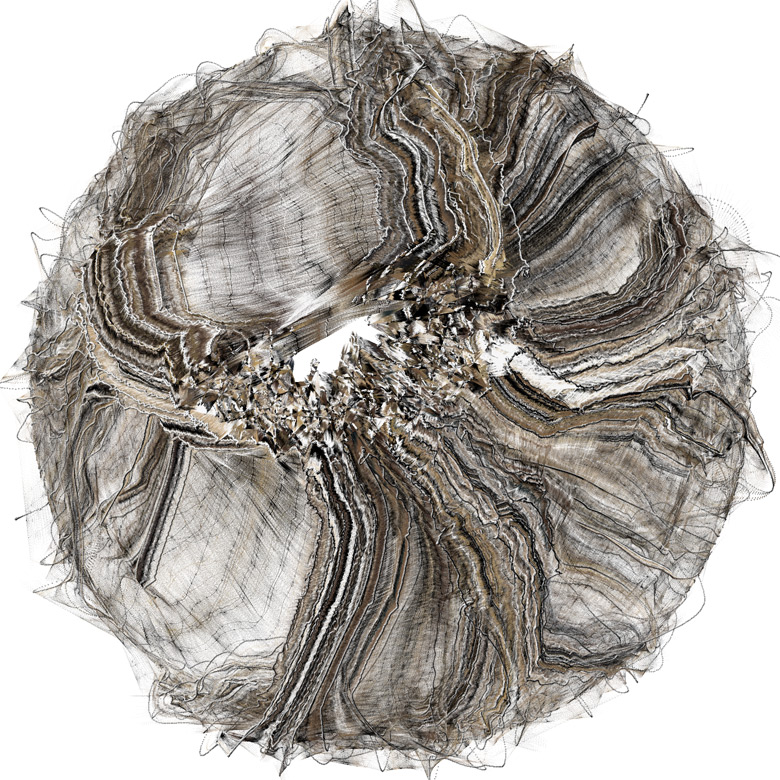
Happy Place is a Processing piece formed by placing nodes along the perimeter of a circle and instructing them to move towards "friends" and away from non-friends. I can see from the source code linked in the web page that it is a fairly simple program wherein at each frame, each node moves then adjusts its position to find a "happy place" between moving towards friends and away from non-friends. All functions and objects are named accordingly, with nodes being called "Friends" and their movement adjustment function called "findHappyPlace".
Happy Place calls out to me because it evokes memories of working physically with charcoal despite being computer generated. It looks like a drawing formed by shaking a piece of paper with charcoal dust on it, which may very well be a physical analogue to this work. Happy Place is a textbook example of effectively complex because it demonstrates chaos created by a combination of randomization and simple rules. The "initial condition" is determined by random placements, but the resulting movement is dictated by clear rules. As Galanter suggests, this leads to chaotic dynamics even though the systems themselves are deterministic, and we see evidence of the butterfly effect and sensitivity to initial conditions in the images that Tarbell displays. Tarbell himself includes varying simulation results, such as when the group of friends migrate away from the circle entirely, or when two friend groups repel each other to opposite sides of the canvas.
